Introduction for Sa'dabad Complex Travel guide for tourists
In this article, we want to introduce you to Sa'ad Abad Palace in Tehran and all its sights.
This article is one of a series of articles on HotelOneClick site designed to provide travelers with more information about Tehran's tourist attractions.
In this article, we try to explain to you all the sights of Tehran's Saadabad Palace with its details. This article is, in fact, the tourist guide of Sa'dabad complex in Tehran.
In this guide, you will find valuable information about the Saad Abad Palace, such as the types of museums and palaces in it, and other amenities.
In this tour guide, take a look at the sights of Sa'ad Abad Palace and its architecture and history.
This travel guide contains following section that you can click on each link to access special subject about Sa'dabad Complex instantly:
- Why is Sa'ad Abad Palace one of the most important historical mansions and palaces in Tehran?
- Getting acquainted with the cultural and historical complex of Sa'ad Abad
- Sa'dabad, a place to have fun
- A hearty walk
- A romantic place
- Visiting different museums
- Creating delicious moments
- Photography
- Different parts of the Sa'dabad complex
- 1- Sa'adabad area
- 2- Museum of Fine Arts /Asvad Palace
- 3- Museum of Saadabad's Royal Albums and Documents
- 4- Mellat Museum Palace
- 5- Arts of Nations Museum
- 6- Royal Kitchen Museum
- 7- Farshchian Museum
- 8- Ashraf Palace (Royal Tableware Museum)
- 9- Royal Weapons Museum
- 10- Royal Clothes Museum
- 11- Museum of Hossein Behzad
- 12- Military Museum
- 13- Green Palace Museum
- 14- The Museum of Omidvar Brothers
- 15- Water Museum
- 16- Miremad Museum
- 17- Royal Car Museum
- 18- Negarestan Museum
- Famous statues of Sa'd Abad
- Buildings that cannot be visited
- Saadabad Garden Museum
- History of Saadabad cultural-historical complex
- The ways to access Saadabad Palace Tehran
- Highlights of visiting the Saadabad complex
- Conclusion
Why is Sa'ad Abad Palace one of the most important historical mansions and palaces in Tehran?
In the bustling city of Tehran, we head to a beautiful garden known today as the Saadabad Historical-Cultural Complex, which houses many buildings.
The place that is also known as the Sa'dabad Palace is popular for its attractive museums and pleasant atmosphere.
Sa’ad Abad historical-cultural complex is a combination of history and nature in the north of Tehran.
At Sa'd Abad complex in Tehran you will find a huge list of historical sites that can entertain you for hours.
If you haven't seen these amazing historical sites yet, we suggest you join the HotelOneClick to get acquainted with the most famous historical palace in the Iran capital.
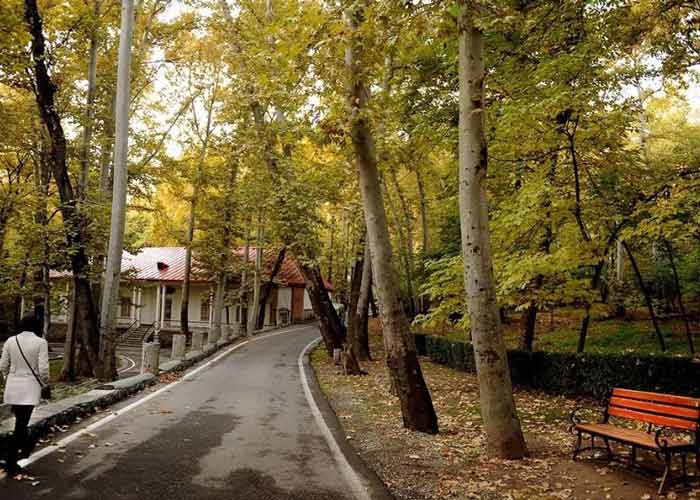
It can be said that the main reasons for choosing Saadabad Palace as one of the most important tourist attractions in Iran can be the following reasons:
- It is one of the capital's important historic attractions.
- It is a valuable memorial to the Qajars and Pahlavi.
- It has numerous unique museums that can meet all the tastes.
- It is one of the most popular places for photography in Tehran.
- It has good facilities including a café and restaurant and provides a complete tour.
- You can have a nice hiking experience there.
- It is one of the best places for a family or friend gathering.
- It contains valuable and unmatched treasures.
- You can see a combination of Iranian and European architecture there.
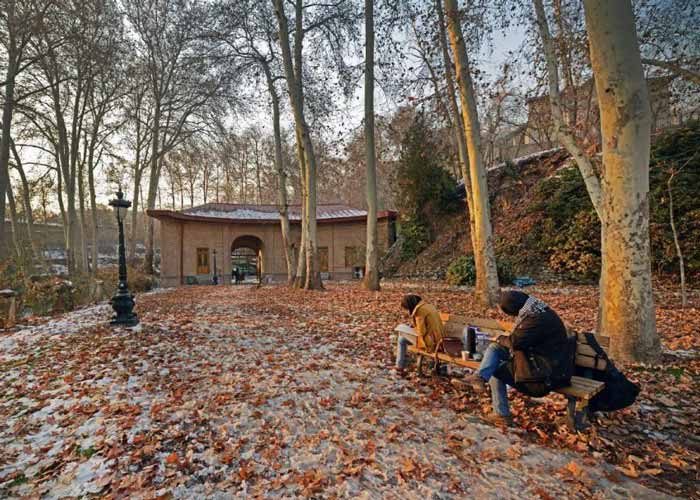
Getting acquainted with the cultural and historical complex of Sa'ad Abad
On your way to the north of Tehran, you can find different options for fun. One of these options is the historic cultural complex of Saadabad, which covers about 110 hectares.
It is a collection of palaces, buildings, and museums, located in the northernmost and most temperate part of Tehran, with natural forests, springs, aqueducts, gardens, greenhouses, and streets.
The complex is bounded on the north by the Alborz Mountains, on the east by Golab Darreh, on the west by Velenjak, and on the south by Tajrish, and the Jafarabad River runs through it.
Sa'dabad is 1650 to 1800 meters above sea level with an average annual temperature of 12.9 degrees centigrade. This means a pleasant climate for having enjoyable hours.
In this collection, you can take a step in the world of Qajars and spend a few hours reviewing the history of the Pahlavi.
This historic landmark takes you to a fascinating journey and surfing it becomes a happy memory for you.

Sa'dabad, a place to have fun
To get to Sa'd Abad, one has to go to the old and noisy neighborhoods of the capital.
After passing through the hustle and bustle and going to the side streets, we reach the entrance to Sa'ad Abad complex, a gateway that can be called the border between Tehran today and Tehran in the past.
After taking a few steps away, you find yourself in a completely different atmosphere from the noisy capital.
You can take a deep breath and discover every part of this great garden away from your worries.
A hearty walk
Take a walk and cross the historic lanes. Take the map of the collection and look for museums. Step by step in this large garden, you will find a reason to stand, watch and enjoy.
In the spring, the garden is covered by colorful flowers, attracting a large crowd. You can watch Sa'ad Abad's masterpiece in the fall.
The rustle of leaves and the passing the streets surrounded by old trees on both sides give you an indescribable feeling.
A romantic place
Saad Abad is also a romantic place. During your stay, you will see many couples and families who have decided to go through history and not miss sightseeing as they stroll and talk. Sa'adabad paths is perfect for a couple walking and creating a lasting and sweet memory.

Visiting different museums
Every step you take; a new story awaits you. Sometimes you stare at royal clothing.
In the corner of the garden, you will experience a fun walk in the royal kitchen. In one part, you enter the art world and in other, you enjoy the experiences of the first Iranian globe trotters.
, note that you have to discover all the parts of the collection yourself. If you just step into this garden
Creating delicious moments
Although tiredness doesn't make sense in this garden, you can go to the café and restaurant of the complex if you wish to refresh.
You can enjoy the view of the surrounding while having a cup of tea or eating a hearty meal.

Photography
Sit on the bench for a few minutes and enjoy seeing the combination of Tehran's nature and history.
Photographers are always in Sa'd Abad, and you will likely see groups of photographers practicing different techniques and trying to portray all the beauties of this collection.
In the end, note that you have to discover all the parts of the collection yourself. If you just step into this garden once you become a regular customer. Don't visit here only once since you will miss many parts.
Tehran's Sa'ad Abad Palace is one of the most important recreational places in Tehran. If you have not traveled to Tehran yet, you can select the best Tehran hotels by booking Tehran hotels.
Different parts of the Sa'dabad complex
Saadabad is a vast complex and sightseeing there requires having some sort of information. Here we try to explore different parts of the collection so you won't miss any part.
Of course, here's just a brief explanation of the collection's museums and palaces, and we'll cover each one in detail in the future:
1- Sa'adabad area
The first thing you will encounter when visiting Sa’adabad is its distinctive and eye-catching atmosphere.
Towering and aged trees alongside the streets have created a fascinating environment that you cannot easily miss.
Here you will find various species of plants, animals, and birds and you can have fun with them for hours.

We will take a more specialized look at the area. It is perfectly enough to know that the Darband River flows through this complex and brings water from the Alborz Mountains.
Imagine what a pleasant atmosphere the sound of the water with the birds' symphony and the blowing of breeze make.
The climate of foothills and waterways of Sa'd Abad have caused the creation of rich vegetation and tall trees, and thousands of old sycamore trees which is one of its most important features.
To date, more than 7,500 of historic and valuable trees have been given a certificate and license plate, and one of each species has a sign.
The birds have also found safe nests in the garden, and you can see a variety of them everywhere.
Mammals such as foxes and Persian squirrels, reptiles such as Caucasian agamas, snakes, insects, and beautiful butterflies are also found in the garden.
Interestingly, Sa’adabad is also known as a museum garden because of its high diversity of plant species, birds, reptiles and other animals, a treasure trove of biodiversity that needs introduction and protection.
The Sa'ad Abad Museum Studies Center has also been established since October 2013 to carry out scientific research and study on the history of the garden and written documents and introduce this valuable natural treasure to the public and provide services in this field.

2- Museum of Fine Arts /Asvad Palace
At the southernmost point of the complex, there is a building that started being built in 1940 on the orders of Reza Shah.
In 1941 with the exile of this king, the building remained half-finished until it was rebuilt under the orders of Mohammad Reza Pahlavi in 1963-1964 and used as the court ministry in 1967.
The use of black marble made the building look attractive and became known as the Asvad Palace.
All of these stones were brought to the site from the Waliabad Chalus mine at that time.
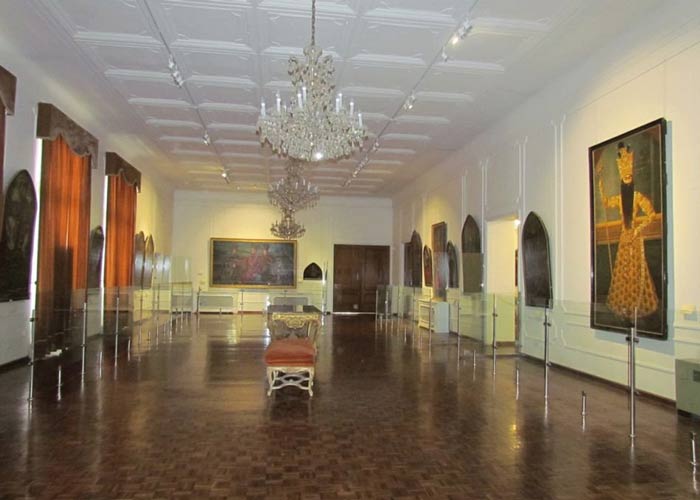
After the Islamic Revolution of Iran in 1982, a new use for this building was defined and opened to the public in 1985 as a museum of fine arts. You can see the following works in this museum:
Ground floor:
In this section, there are the works of contemporary Iranian artists such as Sohrab Sepehri, Hossein Kazemi, Nasser Oveisi, Hossein Mahjubi, Faramarz Pillaram, Hossein Zendeh Roodi, Parvaneh Etemadi, Nasrollah Afjei, and Abolghasem Saeedi are included.
This floor also houses the exhibition section of the museum. For more information on the exhibitions in this section, see this link.
The first floor:
This is a floor for displaying the works of the European artists of nineteenth and twentieth century, most portrayed in the styles of Realism and Naturalism.
Salvador Dali, John Frederick Herring, Peter Graham, Ivan Shishkin, François Musin, and Jules Burton are some of the famous European artists.
Two of the most notable works of this class are Jules Burton's Life Scene and Ivan Shishkin's Pine Forest.
One of the galleries of this floor belongs to the works of modern painting, drawn in styles such as Fauvism, Surrealism, and Impressionism.
The most notable work of this gallery is "Sleep", one of the most beautiful works by Spanish artist Salvador Dali.
Bronze and marble statues are also found beside these paintings.
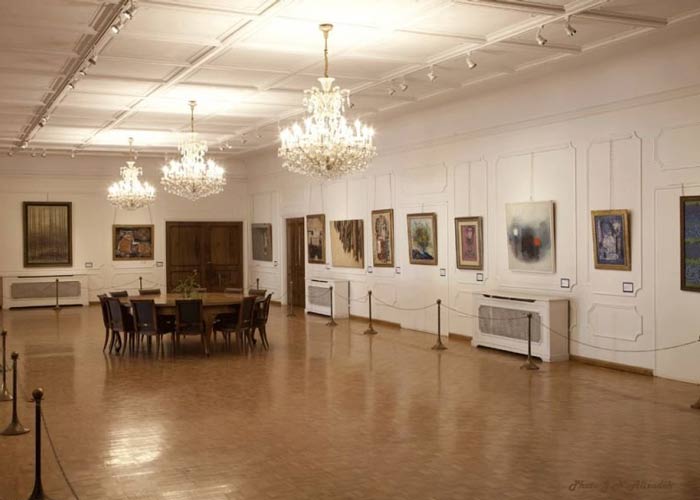
Second floor:
This floor is dedicated to displaying Persian works from the Safavid, Afshar, Zand and most of the Qajar era, often showing pictures of kings, court men and women, and officials of the time with oil paintings techniques that are a manifestation of the splendor of that time.
Highlights include five oil paintings on the canvas that show European figures standing in Iranian costumes. Unfortunately, these works do not have the author's name.
Another beautiful work in this section is a large panel known as the "Crowning of Nader Shah Afshar".
There you can see Nader Shah crowning Muhammad Shah Gurkani (King of India). This painting has the signature of Abolhassan and was painted about 30 years after Nader's murder.
Zandieh works are another part of this category. Here is a picture of Ali bin Abi Talib depicting the religious beliefs of this period.
The face of Zand princes is also seen in the work of renowned painters such as Mohammad Sadegh, Seyyed Mirza and Mirza Baba - famous figures in the court of Karim Khan.
The full-length picture of Fath Ali Shah Qajar is another fascinating work of this section that, according to Robinson (an art critic), is one of the most valuable oil paintings among Iranian paintings.
The painting is 246*125 cm, and an artist named Mehr Ali drew it in 1845 with this signature: "The painting of the servant, Mehr Ali".
Pictures of court dancers and musicians by Abolghasem and Shirin Negar, figures from the scholars and mystics, poets and Iranian philosophers of Rajabali's work - the artist of Mohammed Shah era- and the bird hunter of Kamal al-Molk are other works of this floor.
Tehran's Saad Abad Palace is one of the historical sites near Tehran's Espinas Palace Hotel. If you have not yet booked your hotel, you can use the link below to book Espinas Palace Hotel in Tehran.
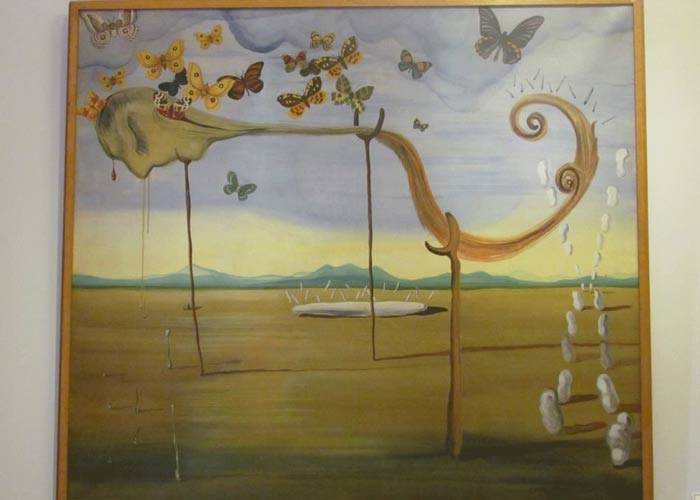
3- Museum of Saadabad's Royal Albums and Documents
It is one of the old buildings in the palaces of Saad Abad, which the first Pahlavi ordered to build as a guard office building and used during the second Pahlavi era as the counter-intelligence command of the Imperial Guard - one of the most important military-administrative units.
The protection Guard provided security for Sa'dabad residents, with complete control over all commuting, entry, and exit of vehicles and more.
After the victory of the Islamic Revolution, various administrative uses were set for the building until it was opened to the public in 2012 as the museum of Sa'dabad royal albums and documents.

Sa'ad Abad Garden is the largest historic garden in the 50 years of the Pahlavi government, with many residents, events and ceremonies.
All the events of that era were recorded using photographs, film, audio and videotapes and written documents, and today a collection of these documents is kept in the Royal Museum of Saadabad's Albums and Documents, some of which are now open to the public.
With 480 square meters, it has one floor and basement with a total of 9 rooms and two halls. In its various parts, you can see an exquisite collection of albums of Pahlavi I and II with records of daily events in Saad Abad. Parts of the museum include:
- Gallery 1: Pahlavi I
- Gallery 2: Pahlavi II
- Gallery 3 and 4: Seals and Cover
- Gallery 5: Exhibition venue, cinema hall, office, and reservoir
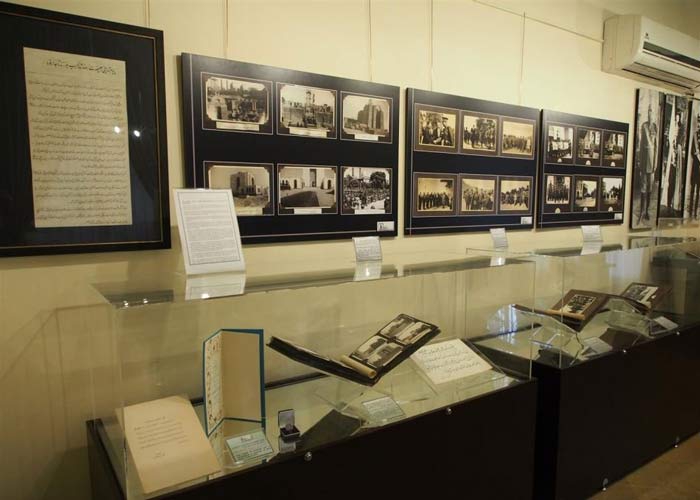
The museum's works are divided into two main categories: visual documents including albums, slides, films, photographs, etc., and written documents including official correspondence concerning the court and palaces, notes and manuscripts, financial documents and more.
Most of the albums in this series cover part of the political, social, cultural, military events of Iran and some other countries from 1921 solar to 1977.
The album celebrating the fourth anniversary of Reza Shah's coronation in 1929 is one of the oldest albums in the museum, and the last album belongs to Ashraf Pahlavi and his family in early 1977.
The shape and structure of the albums are also interesting and are divided into two groups: Iranian and foreign albums. crimson cover albums are among the most exquisite of Iranian albums, with the signature of the artist.
There are 44 albums of highly varied themes and 45 sheets of Pahlavi-era written documents that show visitors the various parts of Sa'dabad at that time, including various palaces and buildings, the Sa’d Abad Garden and its variety of plants and flowers, the small zoo of Sa'ad Abad, the bowling and the billiards and so on.
Saadabad Palace is one of the most famous place to sightseeing in Tehran. You can reserve Tehran Grand Hotel which is near to this place to access it easily.
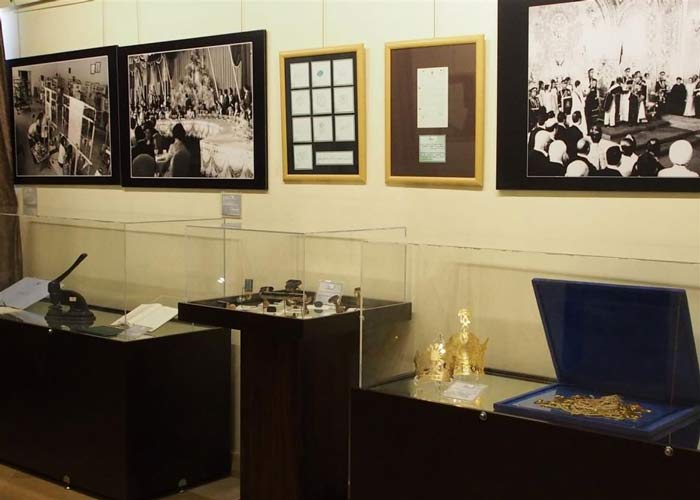
4- Mellat Museum Palace
The Mellat Museum Palace is one of Sa’ad Abad’s landmark which is about 5,000 square meters and bears the title of the largest palace in the complex.
The use of white in its facade has also has given the name of White House.
The building was built in 1931-1936 and became the summer residence of Pahlavi II and his wife Farah Diba.
Engineer Khorsandi, Tatavousian, and Boris from Russia designed the building and used Iranian art to decorate it.
The White Palace has 54 different units, including 10 grand ceremonial halls, and a combination of Iranian and European art is one of the main features of its interior and exterior architecture.
The plasterwork of masters such as Abdolkarim Sheikhan, Reza Malaekeh, Hossein Kashi and Gholamreza Pahlavan adorn this building the handmade carpet collection of Kerman, Kashan, Yazd, and Mashhad artists have given it a different spirit.
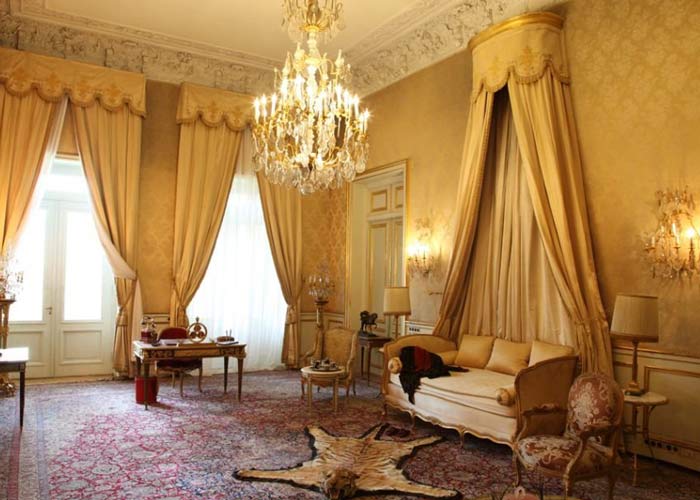
Farah Diba repaired the palace building to his taste during the years 1966-1970.
Changes to the building include turning the greenhouse and basement into a movie theater, the opening of a museum dedicated to Farah, the construction of a warehouse of royal dishes, the installation of a laundry room downstairs, an elevator, thermal-cooling systems, installing bulletproof glass in part of the ground floor windows and more.
Among the works and attractions of this palace are:
- A masterpiece of stone art in the exterior and interior of part of the palace
- The peak of the beauty of the plasterwork art in the reception halls and the Shah's office
- Collection of Rosenthal Dishes and Moser Crystals in the Ground Floor Dining Room
- Game and Entertainment Collection includes 19th Century Snooker Table Made by Cox & Yeman Factory (England) in Billiards lounge.
- Ancient Greek style paintings in the waiting room
- Christian Dior factory products in Farah Diba's bedroom
- Largest rugs and chandeliers and the largest collection of over 500 pieces of dishes in the second floor dining hall
- Silver palm tree and golden vase in the collection of works in the ceremonial hall
- A bronze statue called "Cain Returns from Hunting" in the Shah's bedroom, was donated to both countries during the Pahlavi era on the occasion of the Algerian treaty (between Iran and Iraq) in 1975 by Boumidine, the President of Algeria at that time.
Mellat Museum palace is one of the recreation areas near the Azadi Hotel in Tehran. If you haven't booked your hotel yet, you can use the following link to book Azadi hotel in Tehran.
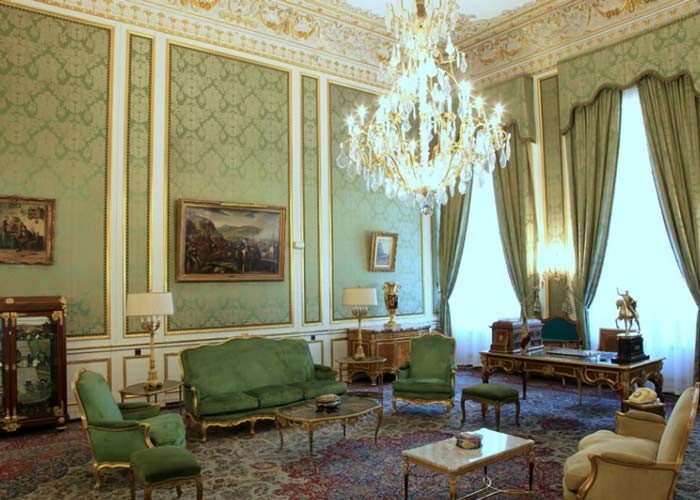
5- Arts of Nations Museum
In the past, a part of the White House was a greenhouse. Farah Diba set up her own museum in 1961-1966 with making major changes in usage.
The museum is now called the Arts of Nations Museum and you can see a collection of artists' paintings. Some of these famous artists include:
- Iranian Artists: Sohrab Sepehri, Leyly Matine-Daftary, Iran Doroudi, Faramarz Pillaram, Hossein Zendeh Roodi, Behjat Sadr, Masoud Arabshahi, Masoumeh Seyhoun
- Foreign artists: Bernard Buffet from France, Herbert Bayer from Austria, Fernand Léger from France, McAvoy from America, Marc Chagall from France.
Sculptures and voluminous works are another part of the museum, including works by Parviz Tanavoli from Iran, Cesar Baldaccini from France, Yaacov Agam from America and more.
The wooden masks of Africa, the ancient pottery of the Maya civilization in South America, the wooden statues of Southeast Asia, etc. are also on display.
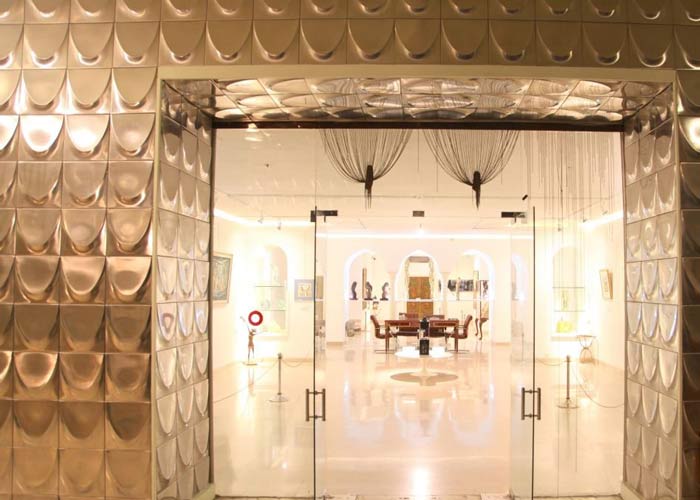
6- Royal Kitchen Museum
The Royal Kitchen Museum is an 800-square-meter building in the central part of the Sa'adabad Garden and next to the Darband River that was known as the Special Kitchen at the time of the Pahlavi II.
The special kitchen served the White Palace and met the daily needs of its residents and guests. The chefs of this kitchen were Iranian and numbered at least 15 people.
They prepared meals for the king, Farah and their children exclusively, even when they were on trips in the country or abroad.
The Royal Kitchen Museum is an 800-square-meter building in the central part of the Sa'adabad Garden and next to the Darband River that was known as the Special Kitchen at the time of the Pahlavi II.
The special kitchen served the White Palace and met the daily needs of its residents and guests. The chefs of this kitchen were Iranian and numbered at least 15 people.
They prepared meals for the king, Farah and their children exclusively, even when they were on trips in the country or abroad.
Each of the chefs did a certain job, such as cookie and cake, foreign dishes, Iranian dishes, and so on. Some of these chefs were also responsible for cleaning vegetables, preparing meat and so on.
Ali Kabiri was known as a special chef and was highly sensitive to food testing and cooking.
Of course, this was not the only kitchen in the complex, and other kitchens were known as public.

The current construction of this kitchen dates back to the second Pahlavi era, but there are sections in the basement that date back to the first Pahlavi era.
The building has a basement that was known as the "Supervision Warehouse" at the time of the Second Pahlavi.
There is also a central lounge with 6 rooms around it: the grocery room, the office, Mr. Kamran Yazdi's office who was the royal kitchen's responsible for official affairs, a bathroom, a restroom, a refrigerator room, a chilling room with industrial refrigerator, dish warehouse, dining room for cooks and kitchen staff, and a changing room for cooks with restroom.
A German company undertook the renovation and modernization of all kitchen facilities in 1975.
One of the equipment that came into the kitchen was the electric oven system, which included a variety of ovens and grills, fryers, and electric cookers.
Previously, gasoline-cast iron ovens were used, which were essentially coal-fired ovens remained from the Pahlavi period.

Underneath the cast-iron of the ovens were filled with coal in the past.
During the second Pahlavi era, these stoves were turned into gasoline stoves and in the 40s liquid gas was brought to the kitchen and you can still see its pipes.
In the basement section, there was a reservoir for liquefied gas that was transported through the pipes to the desired locations.
However, accidents caused by liquefied gas caused cooks to be more inclined to use gasoline stoves.
The kitchen served as many as 20 people from Saturday to Wednesday, but at the end of the week the court served relatives and political figures and the food increased.
Food was taken from the kitchen to the main palace by special waiters called Sharbatdar.
They used to bring food from the kitchen to the palace using wooden board trays or chariots and in special days they used special cars for carrying food.
Inside the car, there was a place to keep it warm and a special guard took care of it along the way.
Today, sections and halls of the museum include the central kitchen hall (including the equipment and utensils), the chilling room (industrial refrigerator), the gallery of the dining room of the chefs, the gallery of functional objects of the royal kitchen.
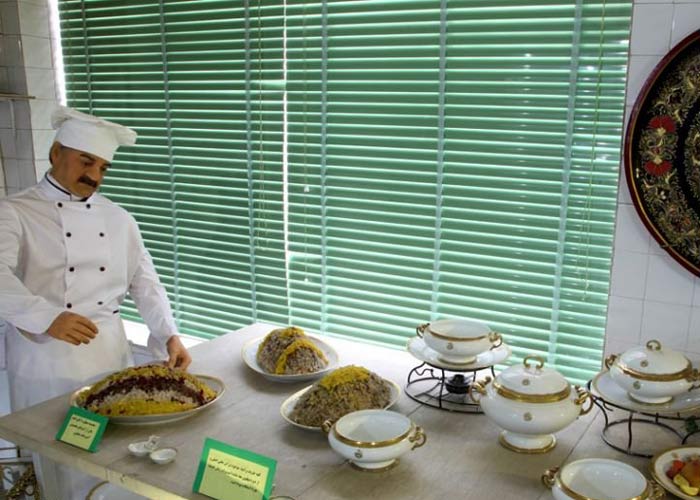
7- Farshchian Museum
The Mahmoud Farshchian Museum is a 600-square-meter building left from the Qajar era. Reza Shah and his fourth wife, Queen Ismat, lived there for a while. In 2001, it was decided to display the works of Professor Farshchian in this building as a museum.
Mahmoud Farshchian is a contemporary Iranian artist who has made dramatic changes in the process of traditional Iranian painting and other traditional arts.
Some of his works have been donated to foreign ambassadors and ministers, and many have been exhibited in countries such as Paris, New York, Chicago, and others.
He has been awarded the Award of Honor in the field of art and culture and is one of the Iranians' famous artists.
One of his arts was to put the white cat's hair on the end of the pigeon feather and to make new brushes that are used in painting with delicacy.
The museum holds more than 50 masterpieces and welcomes visitors.

8- Ashraf Palace (Royal Tableware Museum)
In the east of the Saadabad complex, there is a building built by Reza Shah for Ashraf - the twin sister of Mohammad Reza Pahlavi - between 1936 and 1939.
In 1971, Ashraf Pahlavi ordered the interior and exterior of the building to be reconstructed.
The building was expanded in 2,600-square-meters and 1800-square-meters foundation to a two-floor building.
The interior was designed in French style and the exterior was covered in white marble.
On May 28, 1995, a new use was made for the building, and the gate was opened to the public as Royal Tableware Museum.
In March of that year, the building was handed over to the Presidential Office until 2005.
On January 30, 2006, the Museum of Handicrafts was established at this location, and on February 2009 the time manager of the collection decided to restore the museum to its original condition.
In June 2010, the Museum of Crafts moved to another building inside the Saad Abad complex and it was reopened as the Museum of Royal dishes.
Today more than 500 pieces of dishes and decorative items are displayed in the museum's 5 halls, most of which belong to prestigious factories around the world such as Limoges, Sur, Bavaria, Rosenthal, and others.
The displayed dishes are divided into 3 categories: Qajar dishes, second Pahlavi dishes, and donative dishes.
Tehran's Sa'dabad Palace is one of the historical sites near the Parsian Esteghlal International Hotel in Tehran. If you have not booked your hotel yet, you can use the following link to book your room in Esteghlal hotel Tehran.
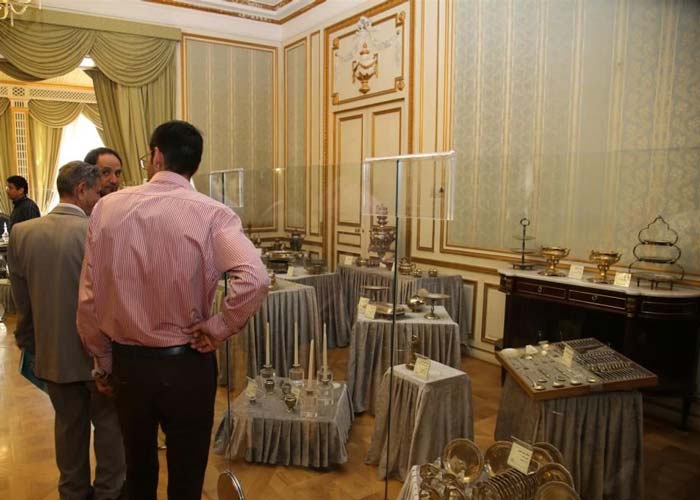
9- Royal Weapons Museum
The Royal Weapons Museum is a building in the north of Sa'd Abad's historic cultural complex that was used by Gholamreza Pahlavi, the former Shah's brother, before the Islamic Revolution.
You can find more than 110 hunting, war weapons and the accessories in the museum, all belonging to the Second Pahlavi and Courtiers.
It includes a variety of hunting guns, all of which are manufactured by famous European and American weapons factories, including Remington, Winchester, Springfield, and Brno.
The first weapons made by the Imperial Army's weapons factories are among the museum's notable works.
The single-headed muzzle-loading rifle with flint is one of the museum's unique weapons dating back to the 17th century and was made by India.
The weapon can be found in the basement of the museum, along with two other muzzle-loading rifles and some Qajar gunpowder and pistols.
A number of weapons have been donated to Mohammad Reza Pahlavi by prominent political and military figures in other countries.
You will also find some historical photos of the Qajar and Pahlavi era at the museum that relates to weapons.
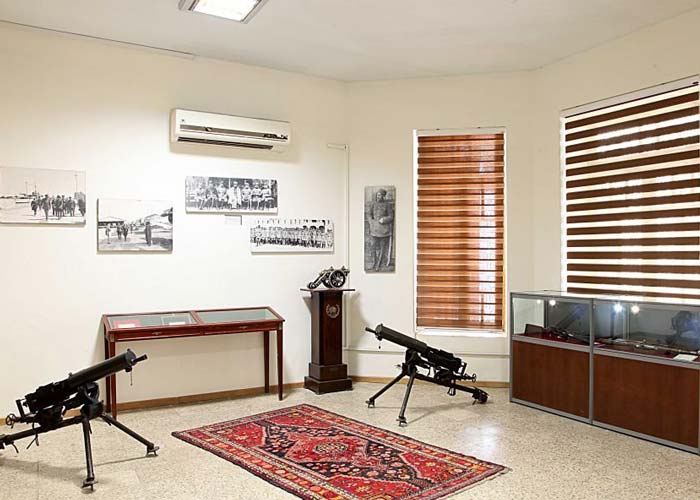
10- Royal Clothes Museum
One of the buildings of the Sa'ad Abad complex is the summer palace of Mohammad Reza Pahlavi's sister, Shams Pahlavi, built during the reign of Reza Shah in 1935 to 1939.
The palace is about 2,600 square meters and has two floors and a basement.
Shams Pahlavi moved to his own palace in Mehrshahr, Karaj, in 1963, and this building was dedicated to preserving objects like the King's foreign gifts and got the title of the Royal Gifts’ Museum.
On the south side of the palace, they erected a hall with porcelain walls and architectural decorations, which had a European lounge with dramatic performances.
Shams Pahlavi's parrots and birds were also kept in a corner of it.
After the glorious victory of the Islamic Revolution, the building was considered a place for the anthropology museum and was opened to the public in March 1994.
In February 2009, the museum was renovated and renamed as Contemporary History and then the Royal Clothes Museum.
In this collection, you can see photos and clothing of some members of the Pahlavi family such as Farah Diba, Mohammad Reza Pahlavi, Ashraf, and Shahnaz Pahlavi and others.
Some of the decorative objects of the second Pahlavi era are also visible in the museum.

The sections and halls of the museum and the highlighted works displayed are:
Entrance hall - first floor includes:
Various photos of the three Qajar periods, two lusters from the Shams Pahlavi era, museum introductory boards, and the Qajar era's evolution of clothing, as well as numerous pictures of the Qajar princes and regals with Qajar clothing.
The audiovisual section of the museum presents a good documentary film showing the evolution of clothing from the Qajar period to the second Pahlavi.
First Floor - First Gallery includes:
A collection of first and second Qajar clothing, paintings of the first Qajar clothing, pictures of the first and second Qajar period
First Floor - Second Gallery includes:
Women's clothing including Arkhalig, skirt, pantalets and long coats has been introduced along with women's footwear, sandals, and shoes.
Men's apparel including men's hats, coats, robes, and light cotton summer shoes.
First Floor - Third Gallery includes:
Introducing Ethnic Garments, introducing traditional Qajar sewing methods
Second Floor - First Gallery
Second Floor - The second gallery includes:
Photos of Mohammad Reza Pahlavi and his first wife Fawzia in different ceremonial costumes, photos of Mohammad Reza Pahlavi and his three wives and children
Second Floor - Third Gallery
Second Floor - Fourth Gallery
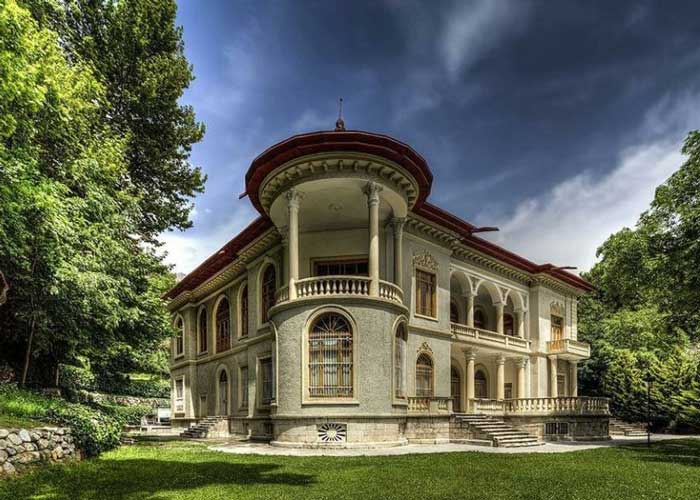
Saadabad Palace Complex is one of the most interesting places to view by tourists in Tehran. You can reserve Tehran Howeyzeh Hotel which is near to this place to access it easily.
11- Museum of Hossein Behzad
The museum of Hossein Behzad is a Qajar-era building known as the Karbassi Palace, Reza Shah's work office and resorts in Sa'adabad. It was used as the summer residence of Reza Pahlavi from his childhood to adolescence, with the title of the "Prince Palace".
After the Islamic Revolution of Iran, the building was dedicated to a warehouse for the collection of some stuff of other palaces. Following the contract between the Cultural Heritage Organization and Parviz Behzad (son of Professor Hossein Behzad) in 1992, 289 works by Professor Hossein Behzad were given to the Cultural Heritage Organization to be used as a museum.
In 1993, after changing the interior space, the building was prepared for the Museum of Hossein Behzad. The museum was inaugurated on May 28, 1994, on the occasion of the 100th anniversary of the birth of Professor Hussein Behzad on World Museum Day.

In 2007, the museum was temporarily shut down due to changes in the building's installation and electrical systems and some renovations.
In 2012, it was resumed with better conditions, and in 2013 was selected by Iran Icom (World Council of Museums in Iran) as part of the "Striving for Survival" section.
There are five halls in the museum where you can see pencil and ink drawings, color paintings with different themes from the valuable master of miniature, Hossein Behzad:
- Hall number 1: Works with the Style of Persian miniature
- Hall number two: Works inspired by poems of Iranian poets
- Hall number three: Works depicted from the culture of the common people
- Hall number four: Drawing the faces of the elders in the form of miniature
- Hall number 5: Drawings
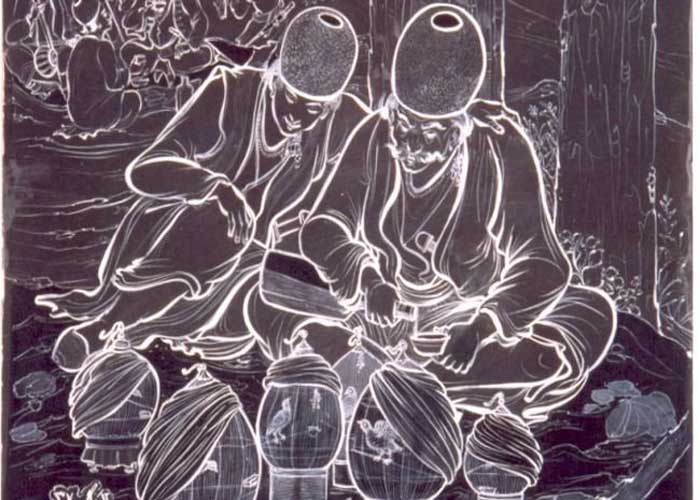
Getting familiar with Professor Hossein Behzad
He is one of the honors of Iranian painting, and the changes he created in miniature are the reason for this art to be saved from duplication and imitation.
French artist and thinker André Malraux believed that Behzad's paintings had given new fame to Iranian miniatures.
He was born in 1274 and passed away on October 21, 1347, but his memory will remain forever. He was buried in the city of Rey in Ibn Babawayh.
Features of Hossein Behzad's style include:
- Avoiding Mongolian faces and turn them into completely Iranian faces
- Observing the principles of anatomy to the extent that they do not hurt the original form of work.
- Creating visual perspective at his work
- Eliminating excessive detailing and avoid creating busy patterns
- Emphasizing on designing and empowering the line by narrowing and widening it
- Clearly demonstrating people's inner and mental states
- Using limited colors or gradations of one color to create works
- Using white on dark background
- Employing new subjects such as depicting the faces of science, literature and art leaders, as well as drawing the culture of the public

12. Military Museum
In a part of the Sa'ad Abad complex, a number of military equipment attracts visitors which is related to the military museum.
This building is remained from the Reza Khan era and was built in 1938 with an area of about 3000 square meters.
It was built in two and a half floors for Taj al-Muluk, the wife of Reza Shah and Mohammad Reza Shah's mother.
The palace was rebuilt in 1972-1973 and dedicated to Shahram the oldest son of Ashraf. Henceforth the building was named Shahram Palace.
In 1981, the Islamic Republic of Iran's Army made changes to the site to move the military museum from the Afsari college to the site. The museum was opened on September 31, 1983, on the third anniversary of the Holy Defense Week.
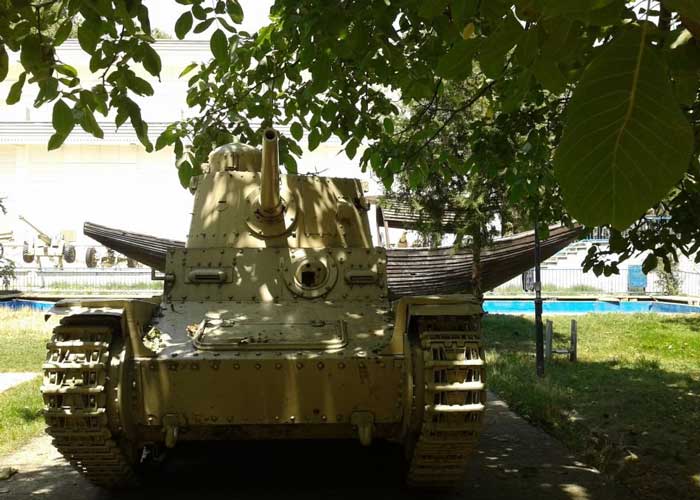
Collecting military artifacts from the Qajar era has always been the focus of attention.
The kings of the dynasty exhibited these works for officials and foreign and domestic officials to visit and to familiarize the new generation with the way of building and decorating war equipment.
This continued during the Pahlavi era with the addition of weapons and other donated equipment to the kings, and in 1961 the Military Museum at the former Afsari College, the current Imam Ali Afsari College, began its work.
For a long time, however, the museum was dedicated to military officials and leaders of the Iranian and foreign countries.
Today, these works are in public view at the military museum of the Saadabad Collection and are placed in various parts of the museum:
- Clothing of various periods of the Iranian Army
- Cold weapons hall
- Army medals and badges and firearms donated to army chiefs
- Light and heavy weapons hall
- Long-standing foreign weapons hall
Tehran's Saad Abad Palace is one of the historical sites near the Espinas Persian Gulf Hotel in Tehran. If you have not booked your hotel yet, you can use the following link to book your room in Espinas Persian Gulf hotel Tehran.
13- Green Palace Museum
It's time to get acquainted with one of the most beautiful palaces in Iran, formerly known as the Shahvand Palace, now called the Green Palace Museum.
Alikhan Vali, a prominent Qajar landowner, built the first half-story palace and Reza Khan bought it in 1922 for seven thousand tomans.
Architect Mirza Ja'far Khan also used al his art and tact and without ruining the original building, he built Reza Khan Summer Palace after 7 years.
The facade of this building is made of unique green stones brought to them from Khamseh mines in Zanjan.
The use of these stones has given the building the name Green House. Lead is used in the palace's building material to prevent rocks from crumbling due to the cold and warming of the weather.
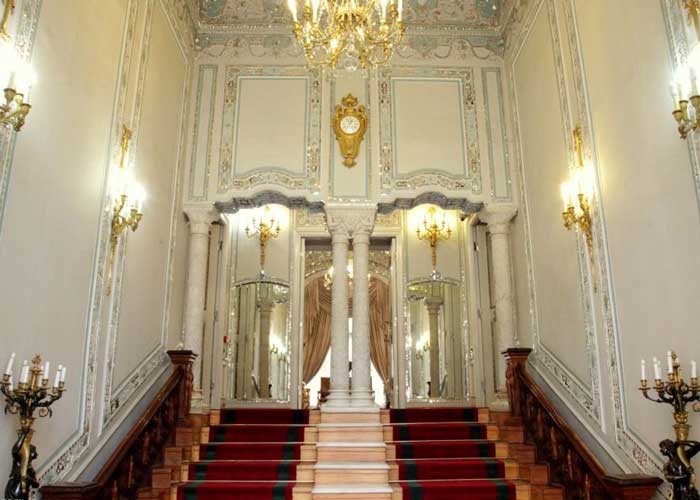
It is the first palace of Sa'dabad that was put into operation during the Pahlavi era.
From the south of this building, one can see a perfect view of Tehran. The palace is 1203 square meters and has two sections:
The first section includes the entrance staircase, waiting room, workroom, mirror hall, private dining room, and bedroom.
The second part is the basement that was added to the building at the behest of Mohammad Reza Pahlavi in 1971-1973 to be a place for foreign guests.
Living room, two bedrooms and dining room are different parts of this basement.
One of the attractive features of this palace is the use of unmatched Iranian art in it.
You can enjoy the beauty of mirrorwork, sculptures, stone carving, illuminated manuscript, inlaid work and more here.
It is not bad to know that people like Malek Hossein and former Greek King Constantine stayed in the palace for some time.
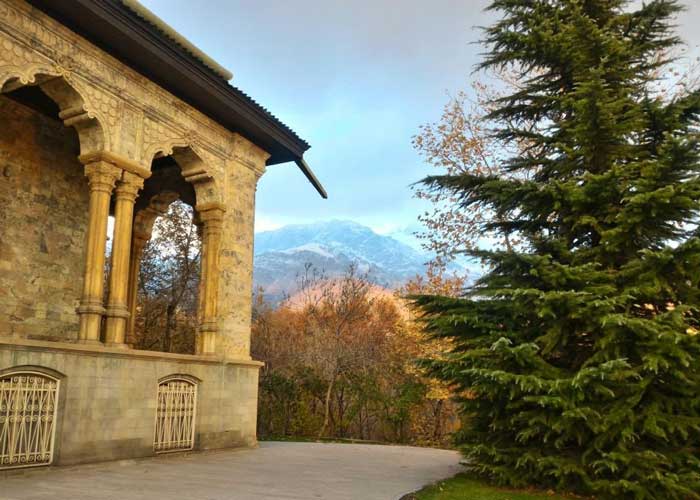
14- The Museum of Omidvar Brothers
In the northwestern part of the Sa'd Abad complex is a Qajar-era building with a red brick facade and beautiful plasterwork that attracts visitors.
In the past, it was a carriage house for the coachmen, but after the Islamic Revolution, it remained unused.
It was in 2002 that the building was renovated and on October 5, 2003, an attractive museum was launched in it. In this museum, you can see the results of the first trips of Iranian tourists and immerse yourself in joy.
Isa and Abdullah are Omidvar brothers who were born in Tehran in 1929 and 1932, respectively.
Isa loved mountaineering and climbing the high peaks of Iran, observing and recognizing the tools of the cavemen.
That was the beginning of the thought of a great journey in his mind, a dream that grew stronger after meeting the French cyclist, who was planning to travel from Paris to Saigon (now Ho Chi Minh City) the capital of Vietnam.
The Omidvar Brothers studied and researched for three years and in 1954 began a journey with ups and downs with about 90$.
Holding exhibitions of their travel achievements around the world, writing articles for valid publications of the world, and giving lectures at the world's greatest universities were the ways by which the two brothers could afford their travel costs.
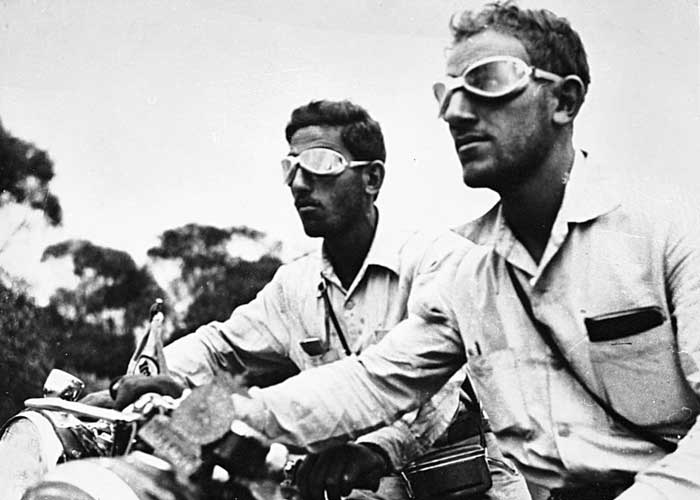
The Omidar brothers traveled four continents in the first seven years by two English one-cylinder motorcycle with the power of 500 cc, until Citroen France automobile company donated a car to them and they continued with that car for the last three years of their travel.
Traveling to 99 countries across the five continents was the culmination of their efforts and brought thousands of photos, films, crafts from around the world and numerous scientific articles and researches.
The first film made by the Omidvar Brothers is about a group of Australia's native people living like people from 2,500 years ago.
This silent film was recorded with a Cookie Rolex camera with three different lenses. They made a 16-hour film about their journey that was shown in the cinema for 10 days after their return in 1964.
Investigating the lives of primitive people far from civilization and acquainting the people of the world with Iran were important goals of their journey.
Now you can share their experiences by visiting the museum of these brothers, from the cannibal tribes’ pictures to the fascinating primitive tools.
If you are a traveler or want to know more about it, don't miss the museum's tourism workshop.
If you are interested in visiting Isa, you can also have the opportunity to meet him at the museum on the first Sunday of each month.
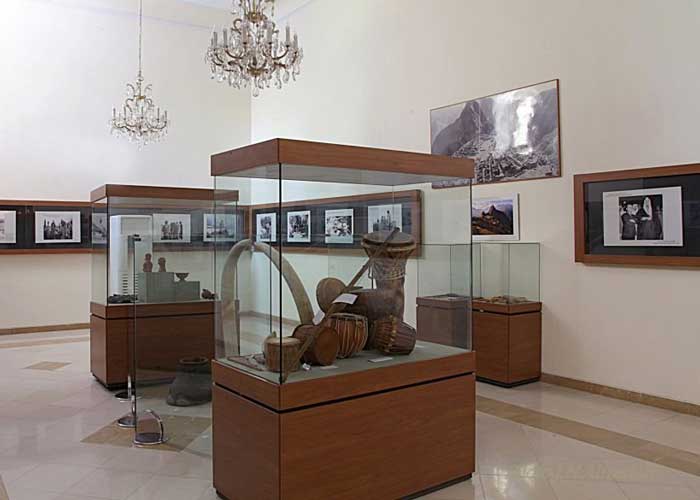
15- Water Museum
The Sa'ad Abad Water Museum or Water Treasury is located in the southeast of the Green Palace.
The building was for some time the head of the Palace's ceremonial office, and then was handed over by Army Chief Kasraian the guard to the army.
Water Treasures is a cultural institution that works to collect, preserve, display the heritage of the past in water-related sectors and explores the attainment, transmission, distribution and operation and techniques used in this regard.
Saadabad water treasure is 2670 square meters and has three parts: the main building is 200 square meters, the side building is70 square meters, and the outdoor area is 2400 square meters.
The following sections can be found in the museum building:
Gallery Number One
- Water-related documentation including Mirab's booklet, deeds of endowment, petitions and ...
- Water supplies include water clocks and aqueduct and well's drilling equipment
- Various statues of water-related scientists, including Karaji and Joneidi

Gallery Number Two
- Introducing and displaying water distribution and irrigation systems in old and new Tehran by building a replica and display of Abshahi cart and Mirab in the past and transfer and distribution of urban water in the present-day Tehran.
- Different maquette and models of old and new structures
- Exquisite photo and tableaus related to water
- A great highlight on the history of the historic water structure of Shooshtar
Gallery Number Three and Four
- Tableaus related to water structures including refrigerators, water storage, dams, and water-related containers
- A notable part of this museum is its outdoor area where you can see live models of new and old water installations such as dams, water canals, cisterns, mills and more. Examples of these models are Band-e-Amir with a scale of 1:25 on a surface of 220 m 2 and Karun 3 dam with a scale of 1: 100 on a surface of 240 m 2.

16- Miremad Museum
There is a two-story building in the Saadabad complex that dates back to the late 13th and early 14th centuries.
It is very similar to late Qajar monuments and appears to have been formed in the late Qajar and early Pahlavi.
The building used to be the residence of Farahnaz and Alireza, the sons of Mohammad Reza Pahlavi.
The combination of traditional Iranian and European architecture can be seen and exhibits a different look.
After the Islamic Revolution of Iran, the building was not used for a long time until the Cultural Heritage Organization found it suitable for displaying manuscripts and made some changes were made to establish a different museum.
By removing the extra walls, it became a museum space, and the Museum of manuscripts was formed.
The museum was adorned by the name of the greatest 11th-century AH calligraphy master Miremad Al-Hasani Seifi Qazvini and was named the Museum of Miremad Manuscript.
Book of poems and manuscripts, objects used in literature and calligraphy, examples of Elamite cuneiform inscriptions, and Sassanid and Avestan Pahlavi inscriptions, etc. are among the works that you can see in this museum.
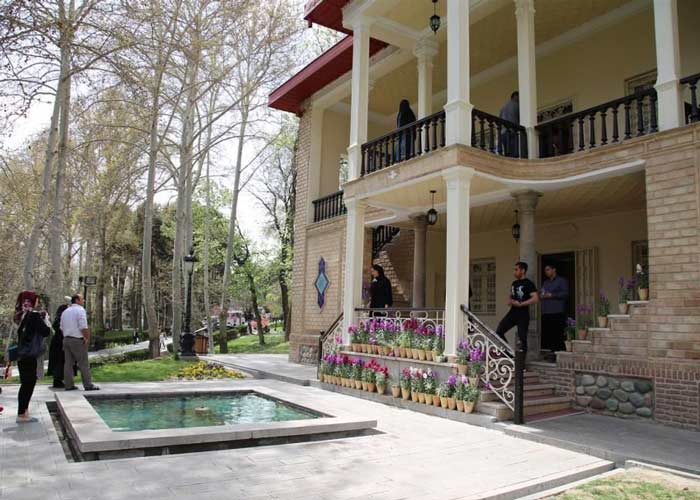
17- Royal Car Museum
One of the most fascinating museums in the Saad Abad Collection is the Royal Car Museum, where you can see the productions of some of the world's most famous car manufacturers.
This museum is the only museum in Iran where all cars are royal and belong to the Pahlavi era.
The Royal Car Museum was opened on January 9, 2012, with the presence of the Vice President and President of the Cultural Heritage, Crafts, and Tourism Organization and has attracted many visitors to date.
The museum's cars include three Rolls Royces, a Speed Buggy, five Benzes, six motorcycles, a snowmobile, and a carriage.
The Rolls Royce Gallery and the Benz Gallery are fascinating parts of the museum.
In these two galleries, there is a Mercedes-Benz SL 300, one of the most beautiful and rare classic cars in the world, owned by Farah Diba.
Mercedes-Benz 600 with bulletproof body and glass are other highlights of the collection used by Mohammad Reza Pahlavi and feature hydraulic height adjustment, electric glass and seats, sunroof, air conditioning, 8-cylinder, and automatic transmission and about 6 tons weight.
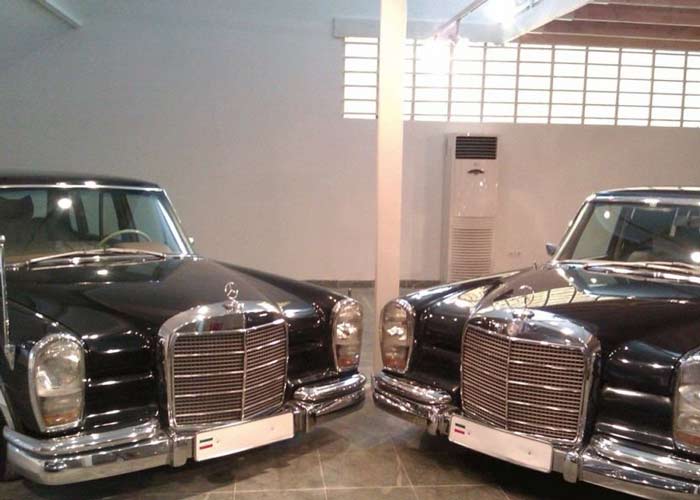
To accommodate in Tehran and visit Tehran's Sa'dabad Palace you can stay at Ibis Hotel in Tehran. If you have not booked your hotel yet, you can use the following link to book your room in Ibis hotel Tehran.
18- Negarestan Museum
At the northernmost point of the Sa'd Abad complex, there is a unique building with beautiful architecture that started as a traditional clothing and clothing design exhibition on March 1, 2009, and has hosted numerous exhibitions since then.
The most important exhibitions held at the museum include:
- Oil Painting Exhibition on canvas by Reza Samadi
- Oil Painting Exhibition on Canvas and Acrylic Mina Ghavidel and Nader Yasemi (son of Ali Akbar Yasemi, one of Kamal al-Molk's distinguished students)
- Paintings by Professor by Mostafa Basimi
- Oil paintings on canvas by Tahereh Chizari
- Paintings by contemporary artist by Khalil Tawaee Hamidi
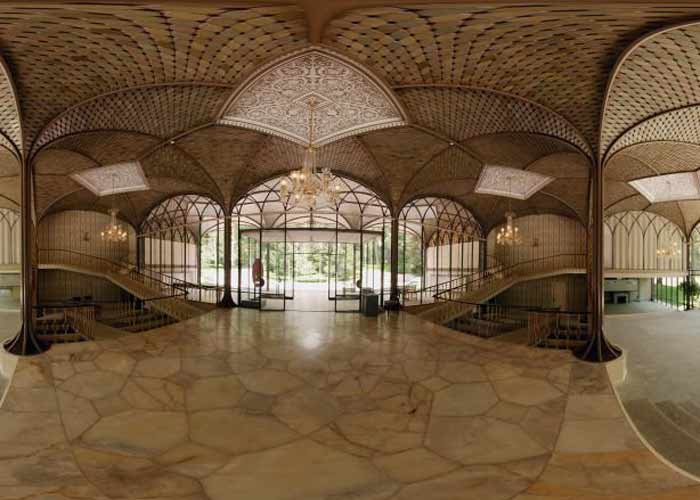
Famous statues of Sa'd Abad
One of the most prominent features we see in Sa'ad Abad is the sculptures in the complex.
These statues are located near the Palace of Mellat and include:
Reza Shah Bronze Statue with Military Boots:
This statue whose boots only remained today, was originally a full-length statue of Reza Shah in military clothing.
With the outbreak of the Iranian Revolution, the statue in Ahwaz was broken by the people.
The statue was the only remained statue of all the Pahlavi kings and was historically valuable so it was preserved and moved to the Saadabad Palace Museum.
Statue of Arash the Archer:
Right across the Palace of the Mellat Arash the Archer statue attracts everyone's attention.
Arash Kamangir is one of the ancient Iranian myths and is of great value to Iran.
He is known for his sacrifice for the country and is a symbol of Iranian culture and history.
Arash Kamangir's statue is 4 meters long in the grounds of the Saad Abad Cultural-Historical Complex and is made of artificial stone and plastic materials by Arjangpour.
Professor Arjangpour also has made the sculptures of the façade of Tehran's judiciary, the reconstruction of the Hor Square, the construction of the Ferdowsi statue in Toos, and so on.
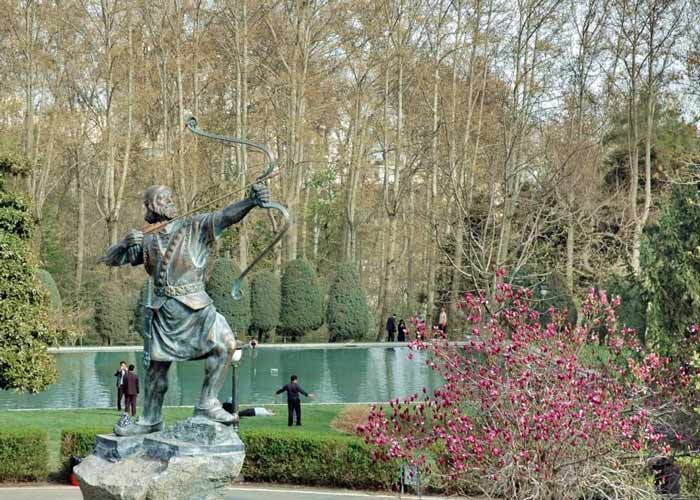
Buildings that cannot be visited
Apart from the museums and palaces that are ready to be visited, there are buildings that you cannot visit.
Some of these buildings are designated as office complexes, and some are owned by the Presidential Office. Here are the buildings:
1- Ahmad Shahi Palace
The oldest palace in the Sa'dabad complex is called the Ahmad Shahi palace, which was built during the late reign of Ahmad Shah Qajar and was completed during the reign of Reza.
After the revolution, the women's Basij in Tehran was set up and is currently being rebuilt to prepare for public viewing.
2- Exclusive Palace
In the west of the Museum of Fine Arts, there is a building called the Exclusive Palace, which was used as a museum of natural history in the early years after the Iranian Revolution, but is currently owned by the Iranian Presidential Authority and cannot be visited.
3- Malakeh Madar palace
The Malakeh Madar palace was the place of living of the Reza Shah in the last years of his life before he was exiled to Mauritius island during the Pahlavi era, and Taj Al-Muluk, his wife and mother of the former King of Iran, lived there until the Islamic Revolution.
The palace is currently owned by the Iranian Presidential Authority and hosts special guests of the government. Today the building is known as the Republic (Jomhoor) Building and the general public cannot visit it.
4- Ahmad Reza Palace
In the northmost part of the Saad Abad Palace, next to Darband Square, there is a building that used to be the Ahmad Reza Pahlavi Palace. The building is also at the disposal of the Presidential Office and cannot be visited.
5- Abdul Reza Building
The Abdul Reza building is one of the places used for administrative purposes.
Abdolreza Pahlavi was the seventh child and the fourth son of Reza Shah Pahlavi, who was born on October 23, 1924.
He usually stayed away from the court, and most of his activities were hunting and taxidermying animals and mechanized farming.
He also chaired the World Wildlife Conservation Convention for several years and eventually passed away in Florida.

6- Bahman Pahlavi Palace
Bahman Palace is one of the most beautiful buildings in the complex during the Second Pahlavi era.
The building is next to the northern gate of Darband and was once home to Bahman, Gholamreza Pahlavi's son.
Since 2003, the UNESCO office in Iran has been housed in the building. In a short time, it was dedicated to the training center of the Sa'd Abad complex and is now used as the management office of the museum.
In the north and east of the building, there are two porches, which cause the resemblance of the two facades of the building.
There are four windows on the south side of the palace and as the west side is connected to the mountain, the view cannot be seen.
7- Farideh Diba's Palace
Farideh Ghotbi, known as Farideh Diba, was Farah Diba's mother, who came to Pahlavi court after Farah's marriage to Mohammad Reza Pahlavi in 1959.
He became one of the Pahlavi court women and resided in one of the palaces. Today the building is at the disposal of the Presidential Office.
8- Reza Pahlavi's new palace
Reza Pahlavi is the son of Mohammad Reza Pahlavi and Farah Diba. He was the first son of the king and according to the constitution of the monarchy, he was the prince of Iran.
The palace owned by him in the Saadabad complex was transformed into a museum for a period of time after the Islamic Revolution in Iran and is now in the possession of the presidency.
9- Leila's palace
Leila's Palace is the newest building in the complex and is located in the central part of Sa'ad Abad.
The building was the summer residence of Leila Pahlavi, the youngest daughter of Mohammad Reza Pahlavi.
In 1994 the building was inaugurated by the Cultural Heritage Organization as the Abkar miniature museum, displaying works by Klara Abgar, an Iranian-Armenian painter, miniaturist.
Today, it is a center for Kids and Teens.
Sa'ad Abad Complex is one of the most interesting places to view by tourists in Tehran. You can reserve Tehran Ferdowsi International Grand Hotel which is near to this place to access it easily.
Saadabad Garden Museum
It is not only the buildings and museums of Saadabad that have special features and draw people to them.
As we mentioned before, the complex environment is spectacular as well. Here's a closer look at the Sa'ad Abad Garden to see what sights there are:
1- plant species
Sa'd Abad Garden Museum is an example of Iranian gardens. The natural environment of this garden can be the main reason for its existence.
This garden has natural forests, rivers, and aqueducts, fruit orchards, greenhouses, extensive grass cover with a variety of rare and non-native ornamental shrubs and trees.
During two periods of the Pahlavi, some plants were imported to Iran and planted there for decoration.
Due to the scarcity of some of these species and the age of the garden, it can be considered a natural tourist attraction alongside the historic monuments.

According to written documents, more than 11 hectares of the garden has grass cover with flower gardens and permanent and seasonal shrubs.
The dominant tree species of this area is sycamore, some of which date back to more than 100 years.
There are a variety of vegetation in Sa'dabad Garden which can be classified as:
- Dense vegetation on the northern side of the garden to the river
- A variety of fruit orchards scattered throughout the garden
- Dense shade trees throughout the garden
- A variety of rare and ornamental trees in the grass and adjacent to the main palaces
Among the unique and rare species of this collection, these can be mentioned: Sequoia, Ginkgo, Tulip, Noel Pine, Calycanthus, Magnolia, Oak, Indian chestnut, Lebanese old cedar.
So far, more than 200 species of trees and shrubs have been identified in the garden, and all trees have an electronic birth certificate.
The grass vegetation of the garden, especially in forested areas, is very pristine and encompasses the Alborz foothills.
The plant species of this garden can be divided into the following groups:
Trees and Shrubs
Firmiana simplex, Chinese wisteria, Guelder-rose, Elder Shrub, Judas-tree, Silver Noel Pine or Blue Pine, Tulip Tree, Chimonanthus praecox, Calycanthus, Smoke tree, Southern catalpa, Chestnut, Sequoia or Giant Tree and Bay laurel.
Herbaceous and shrubby plants
Greater celandine, Shirazi or Hafezi Tulip, CIxiolirion Tataricum, Common daisy, Cornflower, Grape hyacinth, Wild Geranium, Rosemary, Mallow, and Lavender.
Ornamental plants
Wolf's bane and Bird of Paradise

2- Saadabad garden animals
The proximity to the Alborz mountains, diverse vegetation, and tall trees and forest, the valley and river water have caused Sa'dabad to be a suitable place for living of animals.
The presence of birds and their pleasant sounds have added to the charm of this collection.
The animals in this area can be classified into the following categories:
- Birds
- Forrest Buzzard, common buzzard, Rock bunting, Starling, Magpie, Grey wagtail, White wagtail, Redstart conventional tail Jnbank gray, tail Jnbank Carrion, Lesser Kestrel, Kestrel, Syrian Woodpecker, Great Tit, black Tuka, Song Thrush, Eurasian golden oriole, Swallow, the White-eared Bulbul, the Nightingale, Wren, Shikra, sparrowhawk and the Golden Eagle.
- Butterflies
- Other animals
- Marsh frog, green Toad, Persian squirrel, and fox.
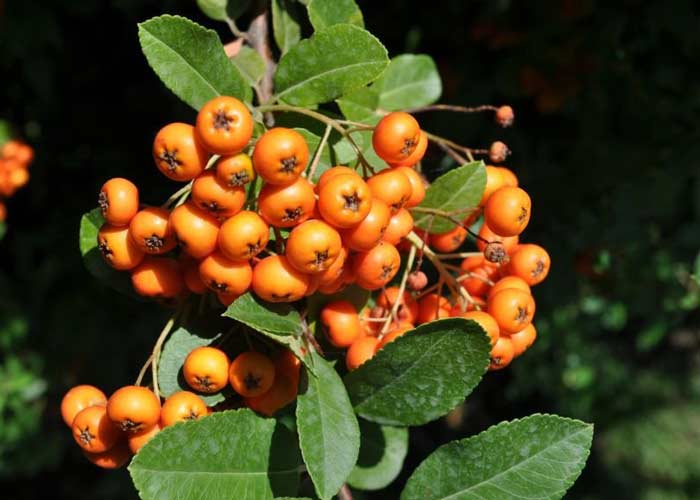
3- Greenhouses
There are a total of 6 greenhouses and 4 plant frames in Saad Abad. Reza Shahi Greenhouse is one of them located in the northern highlands, within the forest texture and the others are found on the southwest side next to the fruit orchards.
According to written documents, during that time, all kinds of cut flowers such as anthurium, Calla lily, Gladiolus, Poppy anemone, cloves, chrysanthemum, Easter lily, and a variety of roses were used in the complex; a part of it was sent to Niavaran Palace and other palaces of the city, and the rest were for sale.
Varieties of edible vegetables were planted for the use of the palace.
In other parts, a variety of seasonal flowers such as violets, Common daisy were used for landscaping and flowering around the palaces.
Mozestan is named after the largest greenhouse in Sa'ad Abad, which is 900 square meters and has two parts.
At one part it there is a variety of bananas that have remained the same until now. In the second part which is in higher altitude, there was a pineapple and anthurium flower house, and then the beautiful flowers of Strelitzia or the Bird of Heaven were planted there.
Greenhouses number 2 and 3 with an area of 205 and 560 square meters, respectively, are still active and include a variety of apartment and outdoor plants such as Benjamin, Aucuba, Begonia, Schefflera, Chinese evergreens, Norfolk Island pine, Bougainvillea, Geraniums as well as the types of flowers and plants available in the yard.
Each year, varieties of rose, Common ivy, rosemary, lily, Buxus, jasmine, narcissus, Chimonanthus, etc. are propagated in these parts and planted in different parts of the garden.
The rest of the greenhouses are also being prepared to produce flowers and plants.
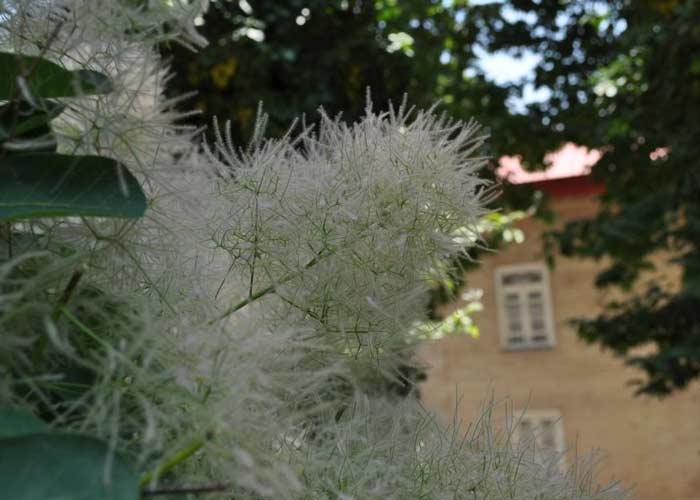
4- The aqueducts
During the first Pahlavi period, the entire garden of Saadabad was irrigated using the Darband River.
During the Second Pahlavi period, the river was supplied to the public half of the day and this did not provide enough water for irrigation of the whole garden.
As a result, twelve old and new aqueducts were used for irrigation:
Sa’ad Abad aqueducts include Harash Ab, Qawam al-Dowleh, Stone House, Ja'far Abad, Waterfront, White House, Special Aqueducts, Javadiyeh aqueducts, Greenhouse aqueducts, Shams Palace aqueducts, Dormitory aqueducts.
History of Saadabad cultural-historical complex
The Qajars, who were pleasure-loving kings, always chose the most pleasant places and wanted their resorts to be the best. Tehran, which holds the title of capital, was one of the favored sites for the construction of various residences.
What was a better place for these kings than the refreshing foothills of Tochal and the lush valleys of Darband to experience a pleasant stay away from any worries?
It was a good excuse for Saadabad to be built and to become the summer residence of the kings during Qajar times.
The oldest building in this complex dates back to the reign of Ahmad Shah Qajar. Of course, some of them were not very fortunate and did not have much opportunity to use the complex.
After the coup of 1920 and the capture of Sa'd Abad by the Akbari dynasty, the complex underwent changes and was allocated to Reza Khan's summer residence.
Along with the remains of the Qajars, new buildings were formed and 14 different small and large palaces emerged in various architectural styles.
Haji Aqa Reza Rafi, known as Qa'em Magham-ol-Molk - one of the political men of Iran during the Qajar and Pahlavi era and a friend of Reza Shah Pahlavi - writes in his memoirs:
I bought Saadabad from Abu al-Fateh the Supreme Commander-in-law, the son of Lady Azimi, the sister of Zel al-Sultan for four hundred thousand toman with the seal of Hajj Agha Noor Allah for Reza Khan, the commander of Sepah.
The Saadabad that I bought at that time was not that big and was eight thousand meters by the river.
Of course, after the purchase of Sa'dabad from the Supreme Commander, I purchased the hill of Ali Khan from the father of the brigadier for seven thousand tomans, which is the hill on which the Shahvand palace was built by Reza Khan and the mother of Shahpour Abdul Reza (Esmat Dolatshahi) resided in that palace.
For staying in Tehran as well as visiting Tehran's Saad Abad Palace, you can stay at the Novotel Hotel Tehran. If you have not yet booked your hotel, you can use the following link to book Novotel Hotel in Tehran.
According to him, the garden of a man called Agha Mohammad Javad Ganje and a considerable amount of the Imam Jome's garden were purchased and added to the lands of Saad Abad.
The southern houses of the Qajar era were bought from Nasir al-Dowleh, the minister of the Nasser al-Din Shah Qajar era, and they were prepared as the barracks during the first Pahlavi era.
Other gardens around Saadabad, including Salar Jang Gardens, Lieutenant-General Aman Allah Mirza, Mostofi al-Mamalek, Shokrollah, Qawam al-Dowleh, Hamdamolsaltaneh the Mostofi's sister, and Mahmoud Badr were also purchased to be added to Saad Abad.
Each of the buildings created was given as a residence to a member of the Pahlavi dynasties.
Mohammad Reza Pahlavi also resided there in the 1970s. The newest palace in the complex also belongs to Leila Pahlavi, the youngest daughter of Mohammad Reza Pahlavi.
With the outbreak of the 1978 revolution, this collection lost its former use and became a museum.
Several buildings in Saadabad have been publicly visited, and some have been dedicated to the presidency over time.
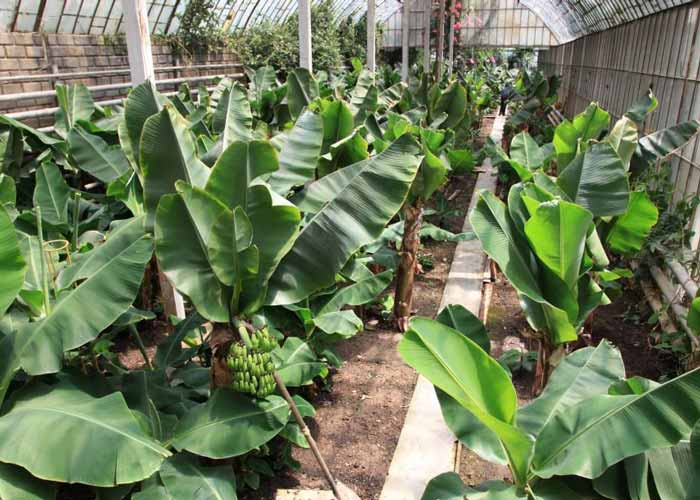
The ways to access Saadabad Palace Tehran
There are several gates to enter the Sa'ad Abad complex: The Nezamiyah gate in Zaferanieh used by Reza Khan in the past. Darband Street gate, most used by Mohammad Reza Pahlavi, Darband Square gate, two doors at Jaafarabad, the river gate and the White House gate. Of course, visitors can only enter from two of them at Zafaraniyah and Darband Square.
Zaferanieh Gate Address: Shahid Kamal Teheri St., Shahid Fallahi St. (Zaferanieh), Valiasr Ave, Tehran, Iran
Route Guide Zaferanieh Gate
- Metro: Take the Tajrish station on line 1. Having arrived at Tajrish Square on the west side of the square, Shahid Maleki Street, take the taxis of Asef or Asad Abad. These taxis will not take you to the complex, but you will go to the beginning of Shahid Taheri Street and after about 10 minutes’ walk you will get to the Sa'ad Abad Palace.
- Bus and BRT Line: Tajrish Square is the destination of various bus lines and you can easily reach the terminal from almost all the main points of the city. These lines include: Rah Ahan Square - Tajrish Square, Phase 2 of Shahrak Ghaem - Tajrish Square, Jamaran - Tajrish Square and so on. BRT Rah Ahan - Tajrish Square is also a good option for taking a part of the route. Having arrived at Tajrish Square, go to the Shahid Maleki Street, take the taxis of Asef or Asad Abad and go to the beginning of Shahid Taheri Street and after about 10 minutes’ walk you will get to the Sa'dabad Palace.
- Taxi: In many parts of Tehran there are taxis to reach Tajrish Square. Once you reach the square, do the same as before.
- Personal Car: Turn south on Valiasr Avenue and turn right onto Shahid Fallahi Street (formerly Zaferanieh). After the red light in your right, you can see the Shahid Zahari Street. Enter this street and try to find a suitable park before reaching its end and the Sa'd Abad complex.
Darband entrance address: south of Darband Square, Shahid Jafari St, Tajrish Square, Tehran, Iran
Route Guide Darband entrance
- Metro: Take Metro line 1 to Tajrish Station. You can find taxis to reach Darband Square at Tajrish Square, at the beginning of Jafari Street and Qods Square, next to the metro station.
- Bus and BRT Line: There are many buses to Tajrish Square and you can easily reach this terminal and the Quds Square from almost all the main points of the city. These lines include Rah Ahan Square - Tajrish Square, Resalat Square - Quds Square, Dastvareh Terminal - Ghods Square, Pich Shemiran - Ghods Square, Imam Khomeini Square - Ghods Square, Jamaran - Tajrish Square and so on. BRT Rah Ahan - Tajrish Square is also a good option for taking a part of the route.
- Taxi: In many parts of Tehran there are taxis to reach Tajrish Square. Once you reach this square, do the same like the previous ways.
- Personal car: Go to Tajrish Square and enter Darband Street from the north side of it. At the end of this street, you would reach Darband Square. There is no parking lot in the complex so you should find a good parking space.
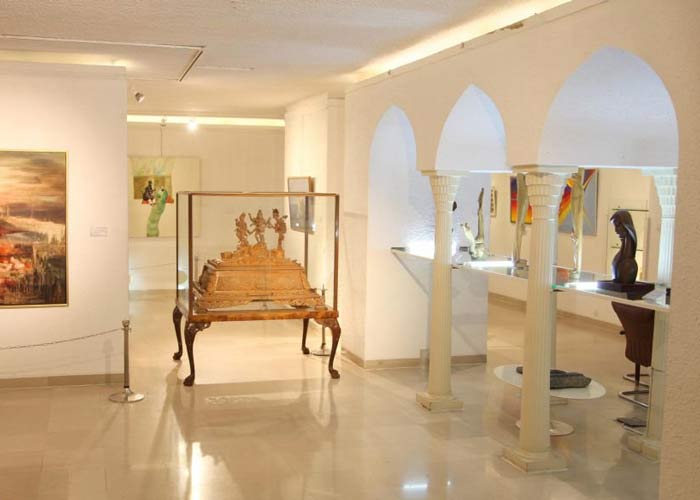
Highlights of visiting the Saadabad complex
- Make your visit on the selected routes
- Do not leave your children by themselves. Failure to control them can result in your children being exposed to the valuable works and thus harming them.
- Keep a good distance from the glass and base shields so that they do not fall over.
- Do not use a flash when taking photos of the museum objects. The flash has damaging rays and over time it has bad effects on the arts such as paintings, woven, colored works and so on.
- Do not use monopods when taking photos, especially inside museums, as they increase the likelihood of clashing with objects.
- Professional photography on-site with accessories such as tripods, etc. is prohibited unless it has licence.
- Advertising photography is prohibited in and around the museums without obtaining the necessary permissions.
- Stopping on the way to take photos will cause a crowd. Do not do this for security reasons.
- Don't take your food to museums.
- Avoid throwing trash in museums and green spaces.
- baby carriages are not allowed in museums.
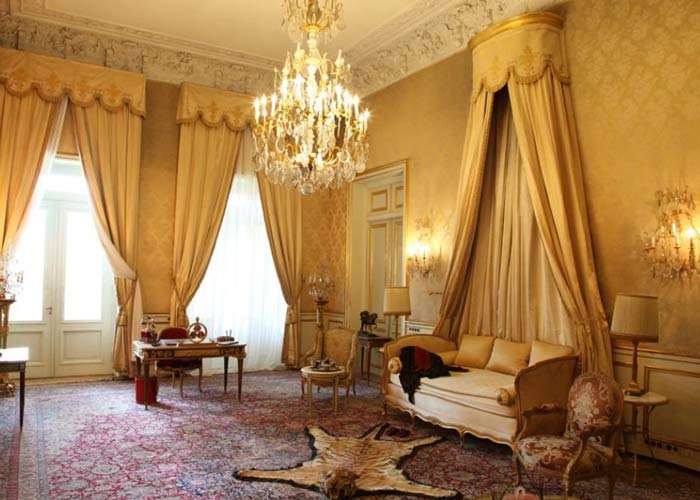
Tourist reviews on Saadabad Palace in Tehran
Saadabad Complex is one of the attractions that foreign tourists travel to Iran and Tehran to witness its beauty.
Here we a take look at the TripAdvisor website to read some of the comments about this complex:
New Zealand Tourist/ Visiting Date: May 2019
Beautiful space
This complex of palaces is located in the northernmost part of Tehran and has a view of snow-capped peaks.
The palaces are very beautiful and really worth a visit. We visited the Green Palace and the White Palace and found both of them fascinating.
Tourist from the Czech Republic/ Visiting Date: March 2018
Still beautiful
After 3 years I visited this collection again and it is still so beautiful. In some parts of the indoors, you are not allowed to take a photo. You can also see the Royal Car Museum here.
Portuguese Tourist/ Visiting Date: March 2018
Beautiful
In a very large garden, the palaces are carefully constructed and have royal decorations. The furniture is of European style.
Argentine tourist/ Visiting Date: November 2018
Extraordinary Royal Collection of Saad Abad in North of Tehran
In the vast area of north of Tehran, at the foothill of Mount Tochal and in a tree-lined area, you will find the impressive complex of Saadabad.
There are over 18 buildings and palaces in the complex that were previously occupied by various members of the Qajar and Pahlavi dynasties.
After the Islamic Revolution of 1978, the mansions became mainly museums, and some have been publicly visited. The largest mansion in the complex, with more than 5,000 square meters, is known as the "White House" (due to the color of its walls).
It was built between 1932 and 1937 in the style of the neoclassical army, it was formerly the residence of Reza Shah and his son Mohammad Reza Shah and his wife, Diba Pahlavi
. The house is now called the "Museum of Mellat Palace", and its basement is called the "Museum of Arts of Nations", which is the private art gallery of Farah Diba. Given the size of the garden and the distance between the palaces, a full visit of the complex is not an easy task.
Organize your visit and get help from the transport of the complex. enjoy!
Conclusions for Tourism Guide at Saad Abad Palace in Tehran
The Sa'dabad complex is one of the capital's most important attractions, which despite its short life span is more important than many of the city's attractions.
The treasures in this collection are of unimaginable value and are a delight to visit.
What you read was just a brief description of the unmatched work of this collection, which we must deal with separately and in detail in order to do justice to it.
If you have had a visit to this collection, tell us about your feelings and your mood.
Which of them could you see and which one did you like the most?
Would you also recommend visiting this collection?
What other attractions do you know in the capital?Which attraction would you like to see this time?
We look forward to your feedback.If you find this guide helpful, we'll be happy we will be happy if you share it on social networks.
Our references to prepare Saadabad Travel guide:
we have used many references to prepare this article. They are some of them in the following:
- official site of Saadabd historical Palace
- Saadabad Palace in Wikipedia
- Where is Sa'ad Abad
- Gardens in Saad Abad Complex
- Palaces in Sa'dabad Complex
- list of all Museum in Saadabad Complex
- Introduction of Saad Abad Palace
